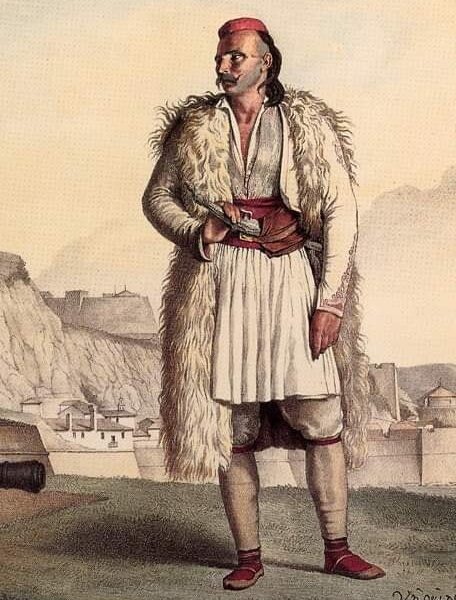The fustanela is a pleated white kilt, it was historically worn by the brigands and mercenaries operating out of the high mountain places, before some of them, heading the 1821 Greek uprising against the Ottomans, propelled it into prestige as the Greek national dress.
The word might had derived from the Italian fustagno 'fustian' and -ella (diminutive), the fabric from which the earliest fustanela were made.
This in turn derived from Medieval Latin fūstāneum, perhaps a diminutive form of fustis, "wooden (cotton) baton". Others speculate that it is derived from Fostat, the capital of Egypt in the 7th to 12th centuries, and now a suburb of Cairo, where cloth was manufactured.
The fustanela, the highland kilt, in 1833 was legally made part of the dress of the Greek army, by Otto the first king of Greece.
It survives today as the costume worn by the elite soldiers, the Evzones, the National Guards stationed in front of the Parliament House, in downtown Athens.
The Foustanela is made from over 30 metres of fabric and features 400 pleats to represent the liberation of Greece from the years of Ottoman occupation.
The Krossia (braided fringes), are blue and white after the colours of the Greek Flag.Fustanela has a long history.
It evolved from the Roman toga, shortened and with pleats added, as may be seen in statues of Roman emperors who wear a breastplate (lorica) above and a tunic ending in pleated kilts reaching to the knees. It was the Roman military dress.
To boil this down, the fustanela became common among frontier peoples whose “national profession” at one time or other was employment in the Roman military.
By the late 19th century, the popularity of the fustanella in Greece began to fade when Western-style clothing was introduced.

